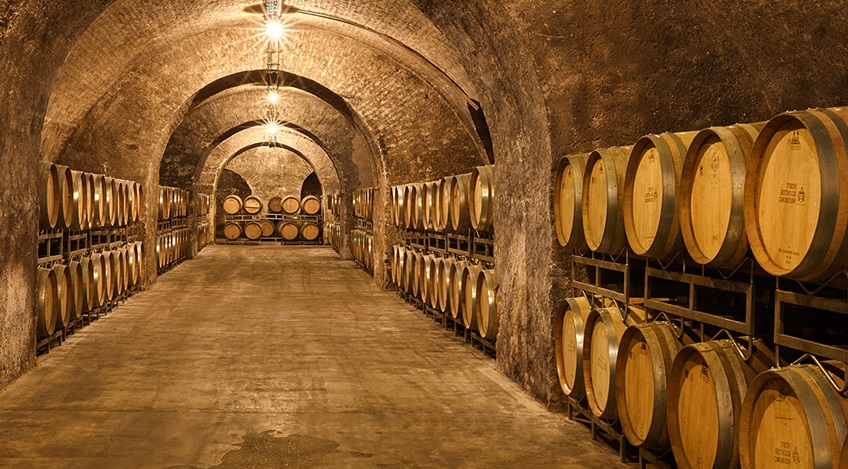Austrian Wine
Austrian wine has a rich history dating back thousands of years.
There are evidence of viticulture in Austria since the time of the Celts (1200 BCE).

The Stift Klosterneuburg wine estate (founded in 1114).
Austrian Wine Regions
Austria is home to several distinct wine regions, each with its own unique terroir, unique grapes, and unique winemaking traditions.
3 federal states are defined as distinct Austrian wine regions:
- Niederösterreich (8 DAC appelations)
- Burgenland (5 DAC appellations
- Steiermark (3 DAC Appellations)

Austrian wine regions © Austrian Wine
Two other wine regions are Wien (1 DAC) and Bergland (0 DAC).
Niederösterreich (Lower Austria)

Ried Heiligenstein, Kamptal, Niederösterreich
© Austrian Wine / Robert Herbst
Niederösterreich, surrounding Wien (Vienna), is Austria's largest wine region. It encompasses several subregions, including Kremstal, Kamptal, Traisental, and Weinviertel.
Each subregion has its own unique terroir and grapes, but Grüner Veltliner is most widely planted. Riesling, Chardonnay, and Zweigelt are also significant.
The region's diverse soils, which range from loess and gravel to limestone and granite, contribute to the complexity and character of the wines.
Wachau
Wachau, along the Danube River in northeast Austria, is one of the country's most prestigious wine regions.
Known for its stunning landscapes of terraced vineyards and historic towns, Wachau is primarily focused on white grapes, particularly Grüner Veltliner and Riesling.
The climate is continental, with warm summers and cool nights, which helps to preserve acidity in the grapes and produce wines with lively acidity, minerality, and complexity.
Burgenland
Burgenland, bordering Hungary in the eastern part of Austria, is known for its diverse range of terroirs, including the flat plains around Lake Neusiedl and the hilly slopes of the Leithaberg mountains.
The region produces a wide variety of both white and red grape varieties, including Welschriesling, Blaufränkisch, and Zweigelt.
Burgenland is particularly renowned for its sweet wines made from botrytized grapes, known as Trockenbeerenauslese and Beerenauslese.
Steiermark (Styria)
Steiermark, in southeastern Austria, is known for cooler climate and its focus on aromatic white grapes.
The region is best known for its Sauvignon Blanc wines, which are characterized by their intense aromas of green herbs, citrus fruits, and minerality. Wine experts consider Steiermark as one of the world's top terroirs for producing world-class Sauvignon Blanc.
Styria also produces excellent wines from the indigenous grape variety, Welschriesling, as well as Morillon (Chardonnay), Weissburgunder and Muscat.
Soil: Volcanic and sedimentary.
Climate: Cooler. Mix of Mediterranean and continental influences.
Subregions:
Südsteiermark. Known for aromatic white wines, especially Sauvignon Blanc.
Südoststeiermark. Offers a variety of white wines with volcanic minerality.
Weststeiermark. Most famous for Schilcher, a rosé wine from the Blauer Wildbacher grape.
Wien (Vienna)
Despite being a capital city, Wien is also a wine region, with vineyards located within the city limits.
The vineyards are primarily situated in the hilly suburbs surrounding Vienna, particularly in the districts of Grinzing, Nussdorf, and Sievering.
The region is known for its Gemischter Satz wines, which are blends of multiple grape varieties grown together in the same vineyard.
Grüner Veltliner, Weissburgunder, Chardonnay and Riesling are among the grapes cultivated in Wien.
Alcohol can be addictive. Always drink in moderation.
© Copyright 2015-2025 W3 Wine School. All Rights Reserved.